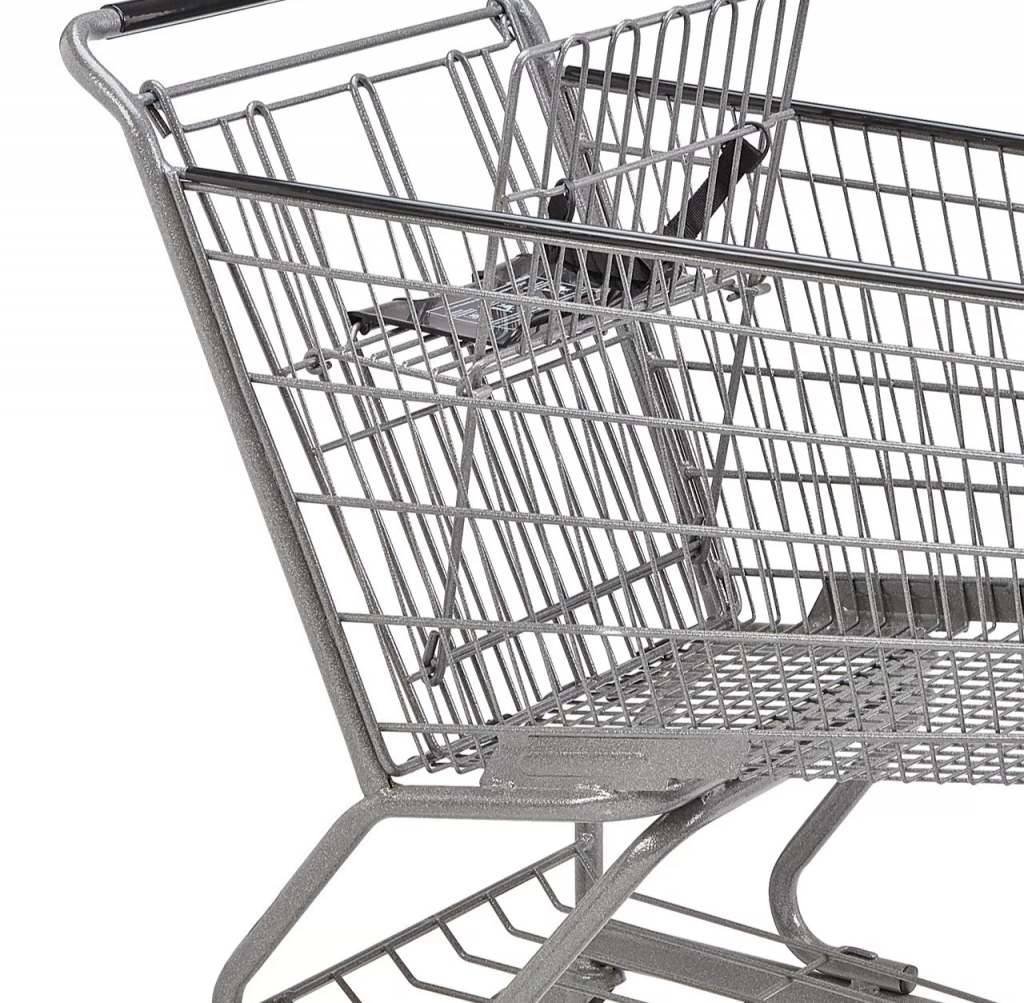With Thanksgiving soon upon us, most Americans will be going grocery shopping for turkey and all the fixings if they’re hosting, or for the ingredients for a side if they’ve got an invite to someone else’s dinner.
Some shoppers will no doubt be shopping the old-fashioned way, piling their groceries into their cart and getting in the queue for a living, breathing cashier. Others will be doing self-checkout, doing their own RFID scanning and bagging. Still others may find themselves pushing an AI-powered smart cart.
According to a Forbes article I saw a while back, for supermarkets, the ability to totally avoid the checkout process may be the “killer app” that will bring shoppers who’ve fled to big-box, mass market retailers like Walma

rt or warehouse clubs like Costco back into the traditional brick-and-mortar grocery shopping sphere.
“There is so much room for technology to improve friction in grocery stores, most especially the pain of waiting in line for a cashier, not to mention problems that arise in self-checkout when you are buying more than a handful of stuff,” said John Harmon, Coresight’s senior retail/technology analyst. (Source: Forbes)
Grocery stores have been deploying technology to improve the shopping experience, including the ability to order online – with or without in-store pickup. But shoppers, for the most part, prefer to pick out their own produce, meats, and deli. Some stores, including Wegman’s, a major chain in my area, tried “scan and go” approaches, in which shoppers using a mobile app scanned and bagged as the wandered the aisles. Alas, this approach led to losses that exceeded the losses stemming from self-checkout systems. (It’s easier to keep an eye on shoppers when they’re in a checkout area rather than scanning their items throughout the store. Wegman’s, among other stores, eliminated its scan and go option.
The hope is that smart carts will give “customers the convenience of cashier-less, pick-and-go unattended checkout,” and the stores will experience less shrinkage.
What smart cards will do, of course, is require stores to invest in a lot of technology: cameras and shelf sensors everywhere. Some smart cart tech providers offer systems that clip on to existing grocery carts; others offer fully tricked-out grocery carts.
Last month, embedded.com had a piece that drilled down on the camera technology used by smart carts. In Implementing multi-camera synchronization for retail smart carts, Maharajan Veerabahu writes about some of the cutting-edge technology that will help bring about the smart cart revolution by “leveraging customer identification, tracking, and product recognition algorithms.”
For starters, he defines multi-camera synchronization, which is essential for getting a read on the items that a shopper is putting in their smart cart.
Multi-camera synchronization begins at the hardware frame-level by interconnecting all cameras through a “Master”-“Slave” configuration. This setup allows for individual camera control and the ability to select the number of cameras to be streamed. Such systems enable multi-image capturing, multi-video recording, and multi-network streaming.
The synchronization between multiple cameras can be achieved through hardware and software trigger modes, each having its own advantages and limitations. (Source: embedded.com)
He then goes on to outline some of the challenges developers face – simultaneous readout and low latency – and then looks at the right approach for implementing multi-camera synchronization. Veerabahu describes a solution that calls for six cameras to take in the entire shopping cart.
…by connecting four USB cameras to cover the corners and two MIPI cameras in the center, creating a complete image. The synchronization between the cameras should be for a single interface – either USB or MIPI. Therefore, it is necessary to design the smart cart device to support both USB and MIPI cameras.
Multi-camera synchronization will require “either a hardware trigger or a software trigger mode.” In his instance, “these modes are implemented in USB camera firmware and MIPI camera drivers.” Veerabahu then expands on how the hardware and software triggers are used. He ends his piece by addressing the latency challenge.
In the previously mentioned setup with four USB cameras on an embedded platform, the USB bandwidth may become limiting. To overcome this limitation, increasing the line time of sensor readout can help utilize the available bandwidth effectively. By doing so, the blanking between frame readouts can also be increased, optimizing bandwidth utilization while avoiding frame corruption.
There are a couple of Wegmans in upstate NY that are experimenting with smart carts, but neither is close by. So whether we end up going through the human-powered checkout line, or do self-checkout, the makings of our Thanksgiving feast will be placed in an old-fashioned, not very smart, regular old grocery cart.
Happy Thanksgiving!
